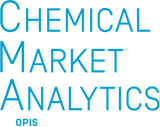Position for Growth in the Fast-changing
Chlor-Alkali, Vinyls, Soda Ash, and Bleaching Chemicals Markets
Inorganic chemical markets are complex. You need to make informed decisions but don’t have time to analyze such an elaborate market. We provide global and regional outlooks and price reports that deliver a comprehensive view of world markets for Chlor-Alkali, Vinyls, Soda Ash, and Bleaching Chemicals. You will also receive access to our industry experts and price database.
Inorganics Strategic Insights

Trade Disputes
The impact of trade disputes on the Chinese and global economies and associated uncertainties regarding Chinese environmental policy
- How does it impact demand growth?
- How does it impact Chinese investment decisions?

Acetylene-based PVC catalysts
Mercury impact for both cell conversion and acetylene-based PVC catalysts to meeting Minamata Convention requirements in signatory nations
- Which producers will convert from Mercury cell units at remaining assets and which ones will close?
- Will additional acetylene-based PVC assets ever be built and will existing ones be allowed to continue operating?

Repositioning
Repositioning of caustic pricing as necessary to support reinvestment
- Can PVC values rise in relation to other plastics or will caustic have to carry the full increase for the ECU value?
- What impact will higher caustic prices have on consuming industries? How much will the demand be impacted by rising pricing?
Near-Term Solutions
Global Chlor-Alkali Provides Full Market Coverage of the Global Chlor-Alkali Value Chain.
The global Chlor-alkali industry is undergoing significant restructuring in response to volatile energy markets and demand growth exceeding capacity growth. Regional production economics including supply and demand balances turn on the key issues, such as geopolitical conflicts, availability of chlorine, shifting technology profiles and access to competitive power and salt. With this rapidly evolving landscape, stakeholders need objective analyses based on completed, accurate data to make sound business decisions.
Global Chlor-alkali gives you unrivaled insights, analysis, data and forecasting for the world’s Chlor-alkali markets: supply and demand data and projections, near-term price, cost and margin forecasts, trade analyses, and access to our proprietary price database and our team of highly experienced market experts.
Access Reliable Analysis and Insights and Accurate Data for the World’s Vinyl Markets with Global Vinyls.
Global Vinyls brings you unrivaled coverage of the world’s EDC, VCM and PVC markets. Each month, clients receive extensive price, cost and margin data for multiple product grades, including the analysis, data and insights regarding production, supply, demand and trade for all major world regions. The vinyls research experts located in the three continents communicate regularly with the major industry sources to collect industry-specific data and transform it into valuable insights and forecasting advice.
Global Soda Ash Delivers Comprehensive Monthly Market Reports on the World’s Soda Ash Markets.
The world soda ash markets are evolving in response to strong demand growth, volatile energy markets, logistics challenges and market participant shifts. Catalysts for change include carbon emission reduction targets, geopolitical issues and demand growth. Dependence on a volatile energy market for critical feedstocks adds another layer of complexity.
In the face of rapid change and uncertainty, Global Soda Ash report provides clients unbiased, accurate data, and analysis to formulate careful investment and planning decisions. Our practice integrates consultants with our North American, European, and Asian soda ash market specialists to bring you the latest updates on the global soda ash industry. Clients receive monthly reports containing price, cost and margin data and forecasts and regional analysis of key market indicators, along with a mid-monthly data supplement.
Access the Authority on Sodium Chlorate, Hydrogen Peroxide, and Sodium Hydrosulphite Market Dynamics and Prices.
Global Bleaching Chemicals delivers monthly, in-depth market analysis and data covering these three chemicals and the markets that consume them in all major global regions.
Expert research analysts around the globe deliver comprehensive market analysis and insights for sodium chlorate, hydrogen peroxide, and sodium hydrosulphite markets in North America, South America Europe, and Asia. Whether buying, selling, or researching the market, these monthly reports are your best source for bleaching chemical prices and market analysis.
Long-Term Solutions
- Long-term supply-demand database updated bi-annually
- Real-time global capacity database
- Detailed country-level trade grids updated bi-annually
- 10-year forecasts for the price, cost, and margin are updated quarterly
- Upside and downside sensitivities
- Strategic market assessments
- Long-term supply-demand database updated bi-annually
- Real-time global capacity database
- Detailed country-level trade grids updated bi-annually
- 10-year forecasts for the price, cost, and margin are updated quarterly
- Upside and downside sensitivities
- Strategic market assessments
- Long-term supply-demand database updated bi-annually
- Real-time global capacity database
- Detailed country-level trade grids updated bi-annually
- 10-year forecasts for the price, cost, and margin are updated quarterly
- Upside and downside sensitivities
- Strategic market assessments
Inorganics Global Team
Hazel Kreuz
Vice President, Global Inorganics Chemical Chemical Market Analytics by OPIS
Read BioMarguerite Morrin
Executive Director, Global Soda Ash Chemical Market Analytics
Read BioNick Kovics
Vice President, Global Chlor-Alkali Service Chemical Market Analytics by OPIS
Read BioEddie Kok
Executive Director, Global Vinyls Service Chemical Market Analytics by OPIS
Read BioHenry Warren
Director, EMEA Chlorine & Vinyls Chemical Market Analytics by OPIS
Read BioAngel Fernandez
Director, Chlor-alkali Research EMEA Chemical Market Analytics by OPIS
Read Bio





